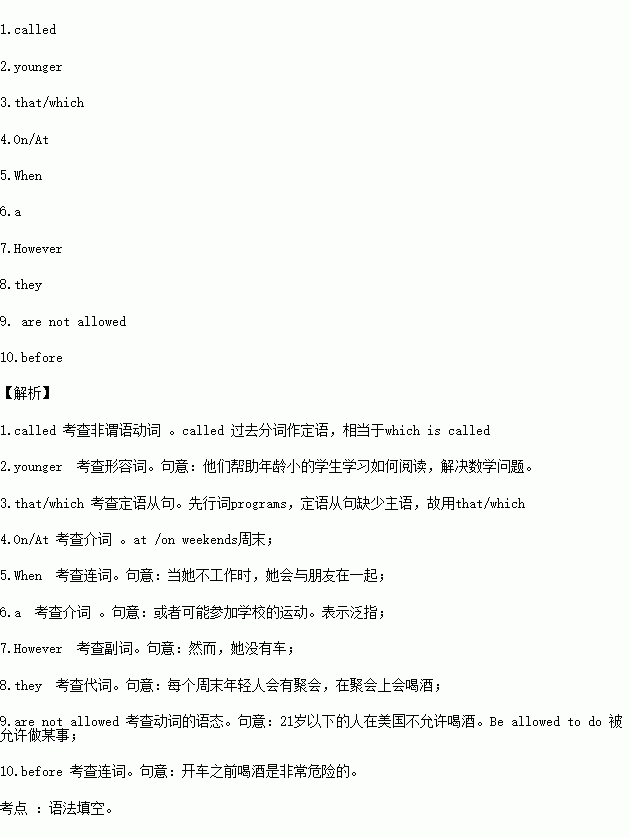题目内容
阅读下面材料,在空白处填入适当的内容或括号内单词的正确形式。
Jean is a 17-year-old high school student. On Saturday mornings, Jean and her friends take part in the program _1._(call) SAVE THE KIDS. They travel to a poor area of Washington D.C.. They help _2._(young) students learn how to read and to solve mathematics problems. Many American teenagers join in programs _3._ serve their communities. _4._ weekends Jean sometimes works at an ice-cream store. _5. she is not working, she gets together with her girlfriends. They might go to a movie, to a shopping mall or to an eating place. Or they might attend _6._ sports event of their high school. They also often stay at one girl’s house for night.
Like teenagers in most parts of the country , Jean began driving a car when she was 16 years old. 7._, she does not have her car. She must share the family car with her parents. About 70 percent of American teenagers have their own cars. Many of them drive their cars to school every day. Jean does not smoke cigarettes or drink alcohol. Neither do her friends. But many teenagers at her school do. Every weekend teenagers have parties, where _8._ drink alcohol. Then they drive to other parties. People under the age of 21 _9._(not allow) to drink alcohol in the United States. And it is dangerous to drink _10._ driving a car. Yet this does not stop some teenagers.

